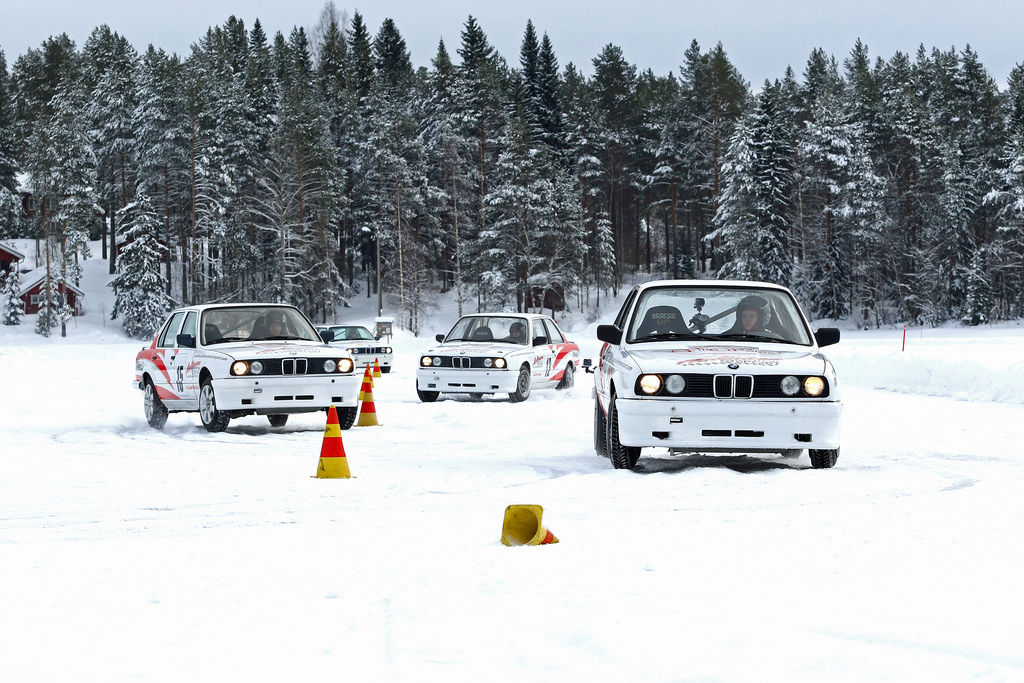
Ice Driving
Ice racing is a form of racing that uses cars, motorcycles, snowmobiles, all-terrain vehicles, or other motorized vehicles. Ice racing takes place on frozen lakes or rivers, or on groomed frozen lots. As cold weather is a requirement for natural ice, it is usually found at higher latitudes in Canada, the northern United States, and in northern Europe, although limited indoor events are held in warmer climates, typically on ice hockey rinks (motorcycles and ATVs only).[1] Tracks in North America vary from 1/4 mile (~400 m) long ovals to several mile-long road course designs.
Tracks used for ice racing include ovals and road courses.[3] Some tracks are dirt track racing tracks with the snow plowed off them. When there is no natural snow, an icy surface may be created by spraying the dirt surface with water when the temperature is below freezing. Artificial ice tracks (usually speed skating ovals) are used where it is not possible to construct natural ice tracks. Some tracks are made by plowing the snow off an area of a frozen lake. Spectators frequently park their cars around the outside of the track on a frozen lake.
In the UK ice meetings have been staged at ice rinks. The longest running event, at Telford, features riders using conventional machines with spiked tires. In the late 1960s ice racing was staged at a number of rinks in Scotland but the machines used were rally based machines with all season tires.
Ice racing tires are either studded or non-studded.[3] Studded tires have a stud such as a screw or bolt to provide better traction and increased speed.[4] Some studs are sharpened to increase penetration.[4] Tires cannot be purchased with studs, so the pit crew needs to attach the studs to the tire.[4] Through 2008, Menard's Racing in Wisconsin manufactured and sold studded racing tires for cars, and they were required in many ice-racing classes. Cars with studded tires are generally required to contain a roll cage and increased safety equipment since they achieve much more speed with the greater cornering abilities.
The sanctioning body's rule book generally specifies the length and/or type of stud, often with the goal of controlling the level of damage done to the ice surface. Aggressive studs can cause enough damage to be a safety concern as they wear through the ice on successive laps, particularly during door-to-door auto racing.
